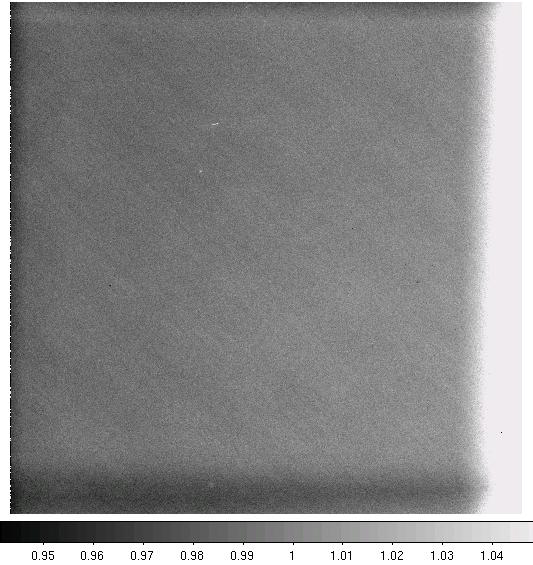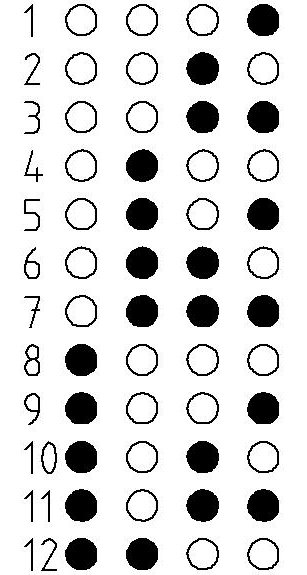(obsolete as of 2014) WIRO-Prime: 2048x2048 Prime Focus CCD Camera WIRO Prime is the first of a new generation of facility instruments for the Wyoming Infrared Observatory (WIRO). Although the 2048x2048 detector is an optical CCD this instrument it will be ideal for several wide-field imaging surveys planned at WIRO. The camera mounts to a mechanical stage which allows focusing of the CCD camera. The mechanical design is based upon an earlier instrument built by Ed Loh of Michigan State University. The University of Wyoming obtained a new, larger CCD and the process of modernizing the MSU instrument was undertaken by Michael Pierce, Philip Haynes and Andy Monson. Steve Hodder was the primary machinist for the project and James Weger developed the electronic design. The upgrades include larger stepper motors controlled with a Compumotor 6k4 controller, improved filter wheels with Hall-effect positioning sensors and the instrument uses a new optical prime focus corrector designed by Chip Kobulnicky, that replaced a smaller original 4-element Wynne corrector designed by Loh, which provides a well-corrected field at f/2.1.
Optical Design
|
|
|
The above figure shows the optical design of the 4-element Wynne corrector. The cross section on the left shows the light from the primary mirror coming from the left and entering the corrector with the filter, dewar window, and detector to the right, respectively. The right figure shows a "spot diagram" calculated through focus on-axis and at four off-axis field angles. The square boxes (2.1 arcsec) show a 4x4 pixel region with the Marconni/EEV CCD.
Mechanical
Design
The figure below shows the re-designed Michigan
State prime-focus assembly mounted at the WIRO prime focus. The
gold dewar is visible right of center with the filter wheel extending
below the dewar. The assembly features a motorized stage that
supports the dewar and is used for focusing. A lower stage
supports the prime focus corrector and allows it to be positioned
relative to the primary mirror in order to be placed at the "sweet
spot" of the design. The motorized stage also holds the
filter wheel and a 60-mm Prontar leaf shutter. Linearity tests
with this shutter indicate that the exposure time is reliable down to
about 0.1 seconds.
|
|
|
Detector
The
primary CCD camera used at the WIRO 2.3 meter telescope features a
2048x2048 detector manufactured by
Marconi/EEV.
The detector has 13.5 um pixels and has excellent cosmetics(see
images below). When used for imaging at prime focus this
results in a field of view of 17.8 arcmin on a side with 0.5224
arcsec/pixel. This detector has a remarkably high quantum
efficiency (QE) over a broad range in wavelength (see left hand
figure below). Our detector has the "midband"
anti-reflection coating plotted in green below. This results in
good QE over a broad range in wavelengths. In the red the QE
peaks at over 90% and is about 70% in the blue, but it drops rapidly
at shorter wavelengths.
The detector was integrated into an Infrared Laboratories LN2 dewar with control electronics from Astronomical Cameras by Bob Leach. The control electronics allow for a "region of interest" as well as on-chip binning. Dual read-out amplifiers allows the entire detector to be read out in only 12 seconds, including the time to write the data to disk. Single amplifier readout takes about 20 seconds but has the advantage of simpler data display and analysis.
Below
are some images taken from WIRO by observers during less than science
quality night
|
|
|
Measured
Performance of the EEV/Marconi CCD
The following
figures show the linearity and read-noise floor for the
dual-amplifiers of the Marconi/EEV CCD with the Leach controller.
Note that at a system gain of 2.5 e-/ADU the linearity extends to a
level of approximately 60,000 ADU with a read-noise of 4.5
electrons. The full-well is thought to occur slight above
64,000 ADU where the A/D saturates but this is presently uncertain.
These numbers will be updated once more detailed measurements are
available.
The figure below shows the 5-sigma limiting magnitude as a function of time for the standard Johnson bandpasses. These are theoretical curves based upon the QE of the CCD and the filter response curves assuming a seeing of 1 arcsec and no moon light. The limited data obtained to date(~2002) suggest that these curves are accurate to about 0.1 - 0.2 mag.
Measured
Performance
The following photometric zero-points were
measured by M. Pierce and R. Berrington:
|
Bandpass |
Zero-Point |
Extinction |
Color-Term |
|
B |
-25.082 ± 0.009 |
0.295 ± 0.004 |
-0.117 ± 0.005 |
|
V |
-25.341 ± 0.009 |
0.193 ± 0.004 |
+0.091 ± 0.004 |
|
R |
-25.373 ± 0.011 |
0.139 ± 0.004 |
+0.163 ± 0.005 |
|
I |
-24.638 ± 0.027 |
0.061 ± 0.011 |
-0.037 ± 0.013 |
Dome
Flats
The
dome flat screen allows for taking flat frames if twilight frames are
un-obtainable or unusable.
The image below shows the ratio of a B-band Domeflat/Skyflat.(by Chip Kobulnicky based on 2010Oct13 data.)

 WIRO-Prime
Interface
WIRO-Prime
Interface
The WIRO-prime interface controls two stepper motors on
the prime focus stage with a Visual-Basic application. The
motors allow for: 1) changing filters, and 2) focusing the CCD
relative to the corrector. The desired filter can be selected
from a pull-down menu and the position will then be highlighted in
the filter position text box. Note: the user must hit the "go"
button to complete the filter move command. To read the current
position of the filter wheel, magnets have been placed around the
filter wheel and are read by a hall-effect sensor. There are 12
filter position and each one is uniquely labeled by its order of
magnets, as seen on the right. Once the filter wheel has stopped
moving the sequence of magnets sensed by the hall effect reader is
translated into a filter based on a file edited by the observer that
translates which filter position corresponds to which filter.
Focus
is controlled by the Jog+/Jog- buttons. Jog+ moves the dewar
assembly away from the primary and Jog- moves toward the primary.
See Getting Good Focus.
Voodoo
Interface
At the present time we use the user interface supplied
by Astronomical
Cameras known as Voodoo. Voodoo is a Java based
application which allows the user to select a region of interest,
the on-chip binning (if any), as well as the exposure time. It
also features a simple interface for adding and editing FITS
keywords into the image header.
FITS
Header Editing
At the present time the CCD camera
does not automatically communicate with the telescope control system
(TCS). However, Bob Berrington has written a program to
communicate the telescope information to the Voodoo header.
Otherwise, the Voodoo interface allows the user to edit some the FITS
header parameters. Since Voodoo does not communicate with the
instruments in use and not all of the appropriate KEYWORDS are
automatically written into the header the user is advised to keep
paper logs and/or fill out the header KEYWORDS themselves using the
Voodoo editing tool. Log sheets are available here.
Available
Filters
The WIRO prime focus camera features a 12
position filter wheel capable of accepting either 2" or 50 mm
square filters up to 6 mm thick. At the present time there are
three filter wheels and this table shows the currently available
filters. Note that thin inserts must be used with 50 mm filters
if they are used in the 2" wheels. See Filter
Wheel for information on how to change filter wheels at the
telescope.